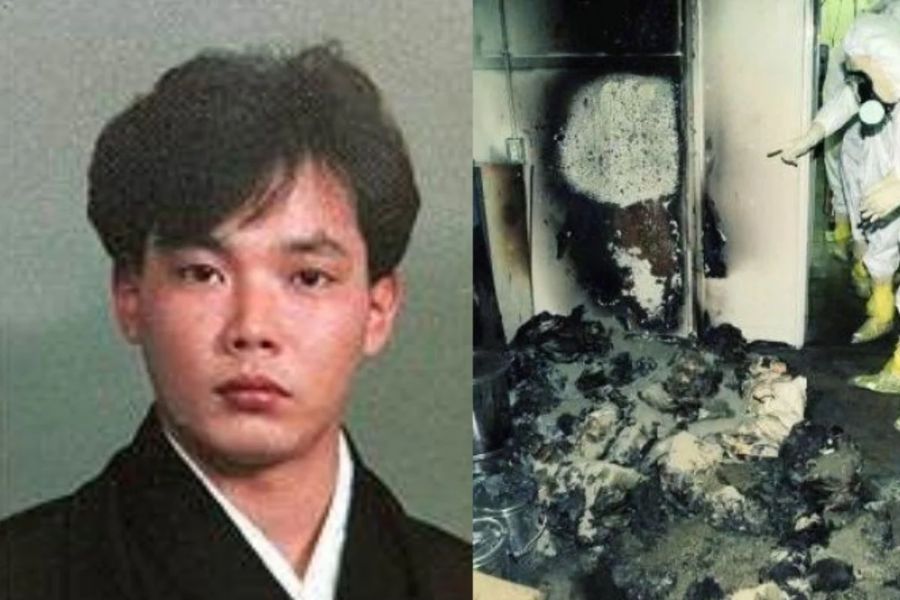Unraveling The Mystery: Hisashi Ouchi Birth Date
Hisashi Ouchi is a name that resonates with many in the realms of nuclear science and tragic accidents. Born in Japan, his life story is not just about his date of birth but is intertwined with a significant event that impacted the world of science and safety regulations. The narrative of Hisashi Ouchi provides an insight into the risks associated with nuclear energy and the human side of scientific endeavors. In this article, we will explore various aspects of his life, including his birth date, personal details, and the unfortunate incident that led to his name being remembered.
As we delve into the life of Hisashi Ouchi, it’s crucial to understand the context in which he lived and worked. The events surrounding his life highlight the importance of safety in scientific research and the profound implications of mistakes made in high-stakes environments. Hisashi Ouchi's birth date serves as a poignant reminder of the fragility of human life in the face of technological advancements.
Join us as we uncover the details about Hisashi Ouchi, his birth date, and the legacy he left behind. We will answer some intriguing questions about his biography, the incident that forever changed the landscape of nuclear safety, and the lessons learned from his tragic experience.
What is the Biography of Hisashi Ouchi?
Hisashi Ouchi was born on March 2, 1964, in Japan. He grew up in a society that was rapidly advancing in technology and science, particularly in the field of nuclear energy. Ouchi was known for his dedication to his work, which eventually led him to the Tokaimura nuclear facility. Unfortunately, his life took a tragic turn due to a catastrophic accident in 1999.
What Happened During the Tokaimura Incident?
On September 30, 1999, Ouchi was involved in a criticality accident at the JCO uranium processing plant in Tokaimura, Japan. During an improper procedure, an uncontrolled nuclear chain reaction occurred, leading to a release of radiation. Hisashi Ouchi, along with two other workers, was exposed to lethal doses of radiation, which led to devastating health consequences for Ouchi.
How Did Hisashi Ouchi's Birth Date Play a Role in His Life?
Hisashi Ouchi's birth date, March 2, 1964, marks the beginning of a life that would tragically intersect with the dangers of nuclear energy. Growing up in Japan, he witnessed firsthand the nation’s reliance on nuclear power and the advancements in technology. His passion for science drove him to work at JCO, where he would face one of the most dangerous incidents in nuclear history.
Personal Details and Bio Data of Hisashi Ouchi
| Detail | Information |
|---|---|
| Name | Hisashi Ouchi |
| Birth Date | March 2, 1964 |
| Birth Place | Japan |
| Occupation | Nuclear Technician |
| Incident Date | September 30, 1999 |
| Death Date | December 21, 1999 |
What Were the Consequences of the Tokaimura Incident?
The aftermath of the Tokaimura incident was severe, not just for Ouchi but also for the nuclear industry in Japan. Hisashi Ouchi suffered from acute radiation syndrome and endured a long and painful hospitalization. The incident raised significant concerns about safety protocols in nuclear facilities and led to widespread changes in regulations and operational procedures.
How Did the Public Respond to Hisashi Ouchi's Tragedy?
The public response to Hisashi Ouchi’s tragic situation was one of shock and outrage. Many people began to question the safety of nuclear power in Japan, leading to protests and calls for stricter regulations. The media coverage highlighted the human cost of negligence in the nuclear industry and sparked a national conversation about energy sources and safety measures.
What Lessons Were Learned from Hisashi Ouchi's Accident?
Hisashi Ouchi's accident serves as a critical case study in the field of nuclear safety. Some of the key lessons learned include:
- The importance of adhering to safety protocols and procedures.
- The need for comprehensive training for all personnel working in high-risk environments.
- The significance of transparent communication and reporting in the event of an accident.
- The necessity for regular safety audits and assessments of facilities handling hazardous materials.
How Has Hisashi Ouchi's Legacy Influenced Nuclear Regulations?
In the years following the Tokaimura incident, regulatory bodies in Japan and around the world began to implement stricter guidelines to ensure the safety of nuclear facilities. Hisashi Ouchi's birth date may be associated with a life cut short, but his legacy continues to influence nuclear safety policies and practices to this day.
What Can We Learn from Hisashi Ouchi's Life and Death?
Hisashi Ouchi's life and the circumstances surrounding his death serve as a powerful reminder of the inherent risks associated with nuclear energy. It underscores the importance of prioritizing human life over technological advancement. As we reflect on his story, we are reminded of the need for vigilance, transparency, and a commitment to safety in all scientific endeavors.
In conclusion, Hisashi Ouchi's birth date is more than just a date on a calendar; it marks the beginning of a life that became a crucial part of nuclear history. His story is a testament to the human spirit and a call to action for the continued improvement of safety in scientific fields. The legacy of Hisashi Ouchi challenges us to honor those who have suffered in the pursuit of knowledge and to strive for a safer future.
Discover The Best Ways To HD Bollywood Movies Download Free
Unveiling The Mystery: Who Is Rose Bundy's Mom?
Exploring The Height Of Anthony Kiedis: How Tall Is He Really?


